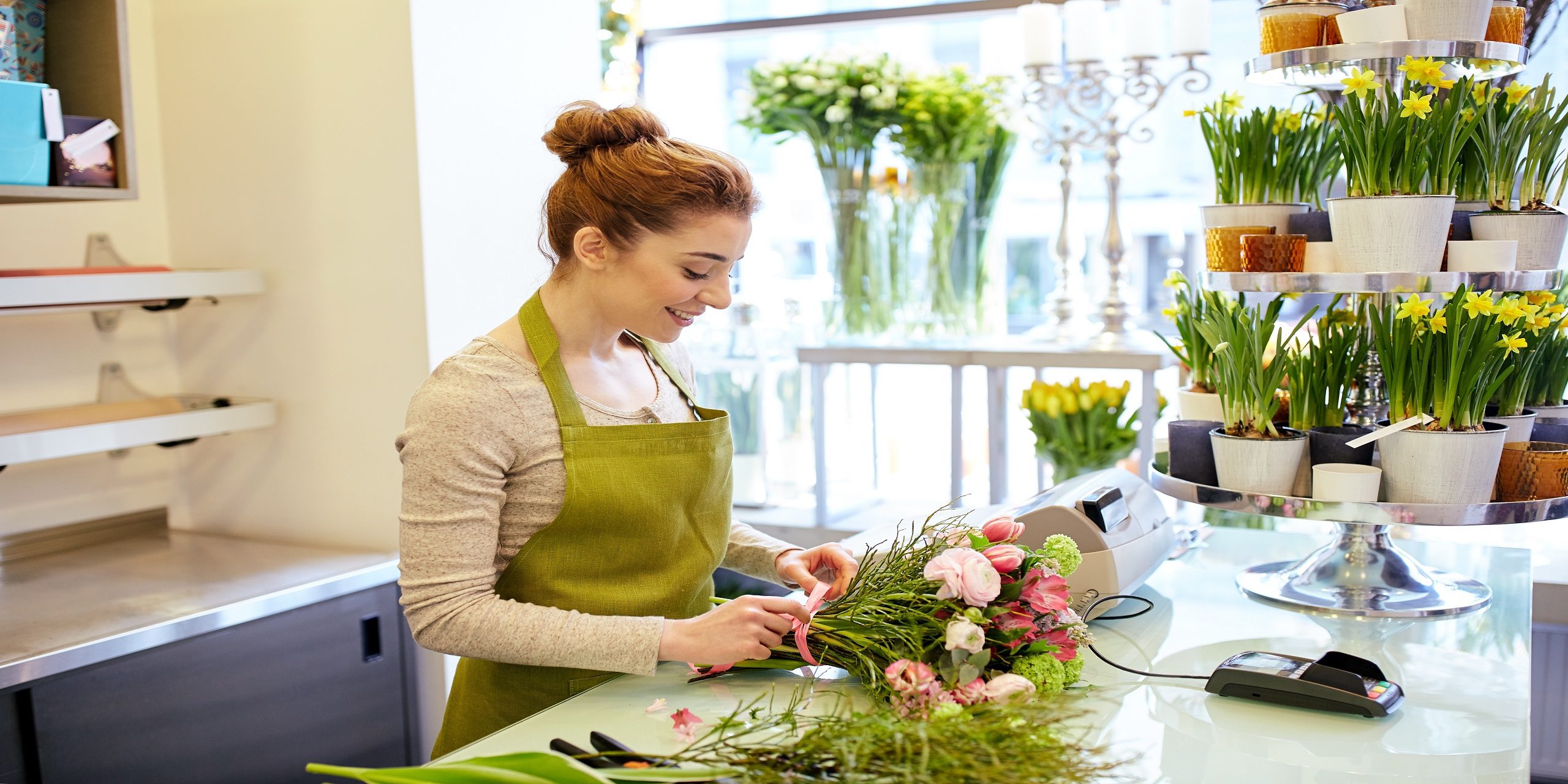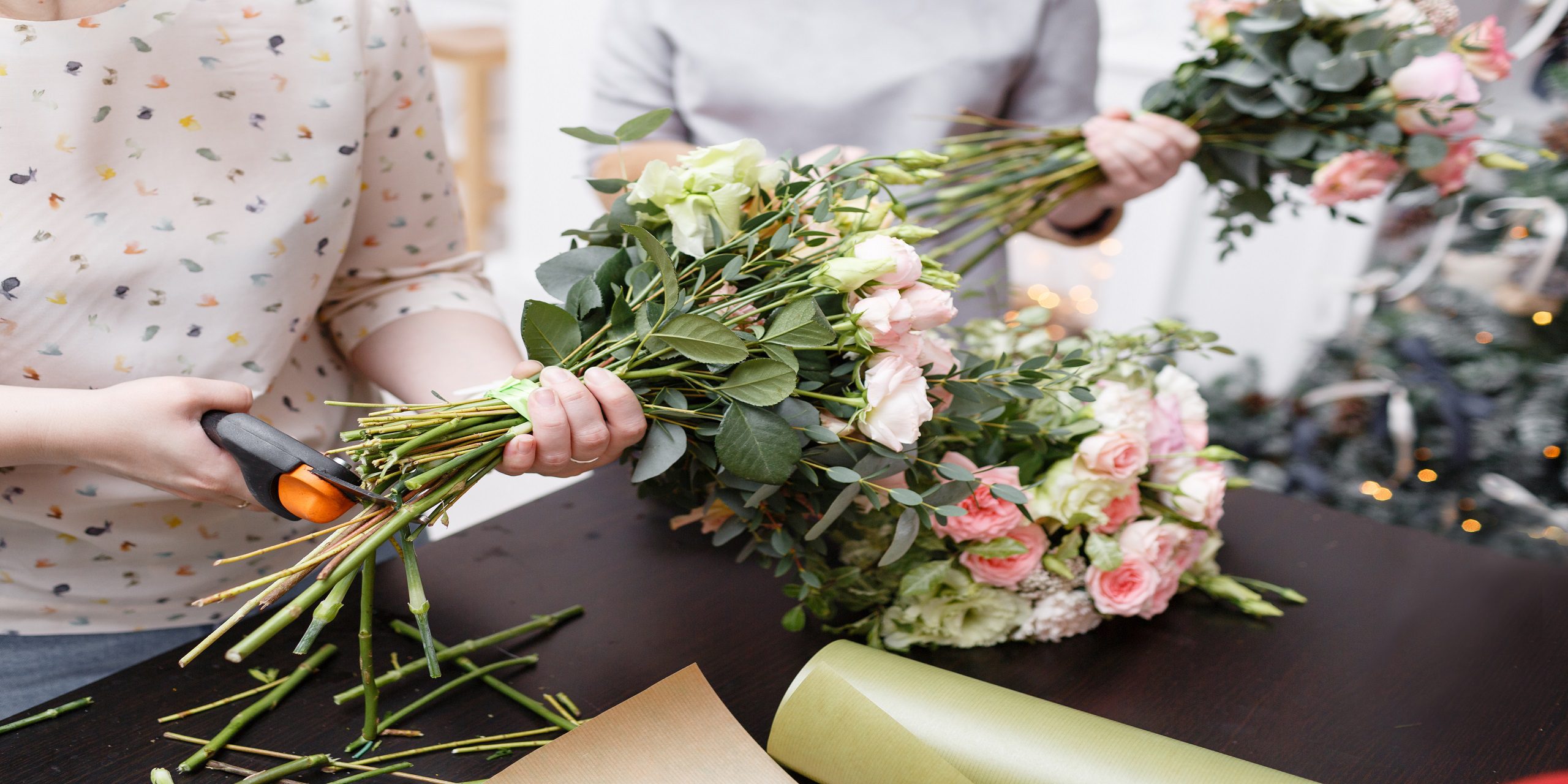No products in the basket.
Have you ever wondered how those beautiful flower arrangements at weddings and events are made? Thinking about starting a career in it? If so, then this blog is the perfect solution for you. In this blog, we will explore what floristry is all about, including its history, the skills you need, and the different jobs you can have in this field. So, whether you want to become a florist or just love flowers, join us to learn more about the wonderful world of floristry.
What is Floristry?
Floristry is the art and business of designing, creating, and selling flower arrangements. First and foremost, it involves working with flowers, foliage, and other plant materials to make beautiful displays such as bouquets, centrepieces, and wreaths. Florists use their creativity and knowledge of plants to create arrangements for various occasions like weddings, birthdays, funerals, and other events. Additionally, floristry can involve growing flowers, buying and selling them, and providing advice on how to care for them.

What Are The Elements of Floristry?
Now, let’s explore the elements of floristry. At its core, floristry involves several key things:
- Flowers and Foliage: The primary materials in floristry are flowers and foliage. Florists need to understand the different types of flowers, their seasons, and how to care for them to ensure freshness and longevity.
- Design Principles: Florists use design principles such as balance, contrast, harmony, and proportion to create visually appealing arrangements. These principles help in arranging flowers in a way that looks both natural and artistic.
- Tools and Supplies: To create floral arrangements, florists use various tools and supplies, including scissors, pruners, floral foam, wire, tape, and vases. Each tool has a specific purpose and helps in achieving the desired design.
- Occasions and Themes: Floristry is often tailored to specific occasions and themes. For instance, wedding floristry involves creating bouquets, boutonnieres, and centrepieces that match the wedding’s theme and colour scheme. Similarly, funeral floristry focuses on creating arrangements that convey sympathy and respect.
The Skills Required in Floristry
Being a florist requires a combination of artistic and practical skills. Firstly, florists need a keen eye for detail and a good sense of aesthetics. This helps them in creating arrangements that are not only beautiful but also meaningful. Secondly, knowledge of plant care is essential. Florists must know how to handle different types of flowers, how to keep them fresh, and how to store them properly.
Furthermore, good communication skills are important in floristry. Florists often work closely with clients to understand their preferences and requirements. They need to be able to listen carefully and offer suggestions that meet the client’s needs. Lastly, business skills are important for those running their floristry shops. This includes managing finances, marketing, and customer service.
What Does a Florist Do?
Now, let’s know the duties of a florist and the process of creating a floral arrangement. It usually begins with understanding the client’s needs and the occasion. Next, the florist selects the flowers and foliage based on the desired colour scheme and style. Then, they prepare the flowers by trimming the stems, removing any damaged leaves, and conditioning them to ensure freshness.
After that, the actual arranging begins. Florists often start with a focal flower and build around it, adding complementary flowers and foliage. They pay attention to the height, shape, and overall balance of the arrangement. Once the arrangement is complete, it is placed in a vase or container with water and flower food to keep it fresh.

The Business of Floristry
Moreover, floristry is not just an art; it is also a business. Many florists own and operate flower shops, while others may work in floral design studios or for event planning companies. Therefore, running a floristry business involves various tasks, from sourcing flowers and supplies to managing orders and delivering arrangements.
Furthermore, marketing is another important aspect of the business. Florists use various strategies to attract customers, such as creating an online presence through social media and websites, participating in local events, and offering promotions and discounts. Customer service is also key in building a loyal customer base. Providing personalised service, delivering high-quality arrangements, and ensuring timely delivery are all essential for success in the floristry business.
The Impact of Floristry
Floristry has a significant impact on people’s lives. Flowers have the power to convey emotions, brighten spaces, and create memorable experiences. Whether it’s a bouquet for a loved one, a centrepiece for a wedding, or a wreath for a funeral, floral arrangements play an important role in many important moments.
Additionally, floristry can have a positive impact on mental health. Studies have shown that flowers can boost mood, reduce stress, and enhance overall well-being. The act of arranging flowers can also be therapeutic, providing a creative outlet and a sense of accomplishment.
Florist Salary: How Much Do They Earn?
Florists create beautiful flower arrangements for various occasions. If you’re thinking about becoming a florist, you might wonder how much they earn. Here’s a basic idea of the florist’s salary:
- Average Salary: Florists in the UK earn an average of £18,000 to £25,000 per year. This amount can change based on experience, location, and the type of employer.
- Starting Salary: When starting, a florist can expect to earn between £14,000 and £17,000 per year. As you gain more experience and skills, your salary will likely increase.
- Experienced Florists: With several years of experience, a florist can earn between £20,000 and £30,000 per year. Moreover, experienced florists may take on more responsibilities, such as managing a flower shop or supervising other florists.
- Self-Employed Florists: Self-employed florists might earn less when starting, but successful business owners can make more than salaried florists. Therefore, their earnings depend on the success of their business and the demand for their services.
Conclusion
Floristry is a combination of art, science, and business. It involves creating beautiful and meaningful floral arrangements for various occasions, while also managing the practical aspects of running a business. With its rich history, essential skills, and significant impact, floristry continues to be a beloved and valuable profession. Whether you’re looking to pursue a career in floristry or simply appreciate the beauty of flowers, understanding the art and business of floristry can improve your appreciation for this timeless craft.
Furthermore, you can visit the School of Health Care and enrol in our floristry course so that you can grasp a more in-depth idea of floristry and pursue a career in this field.




